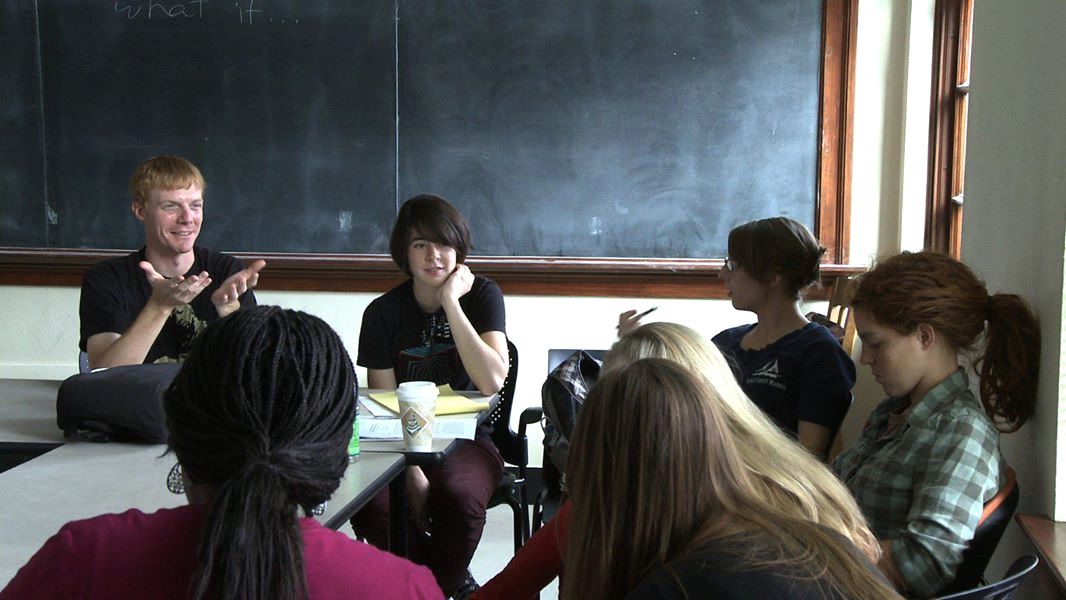Now that Spring semester is over, I can get back to the real work. One of my classes (Dr. Nick Lasorsa’s Theory Building in the Social Sciences class) inspired me to rediscover visual modeling (see Shoemaker, Tankard & Lasorsa, 2004 and Britt, 1997). I’ve always been a big fan of playing with ideas visually, but it had been a while since I’d tried to model any of the things I’ve been working through in my head. Below, I’d like to float three models in various stages of development.

I’ve been playing with this model for several years. Thinking through the creation and evolution of culture continues to lead me back to a mix between people and technology. I see people working on the prevailing culture through various bottom-up processes and technology shaping it from the top-down. There’s a lot more to it, of course, but that’s about as parsimonious as models get.

It has long been the case that media studies saw the evolution of media technology (and its relationship to our senses) as moving from an oral culture, to a print culture, to electronic media (i.e., back to a predominantly oral culture), as shown on the left side of my model above — Walter Ong (1982) and Marshall McLuhan (1964) both recognizing the shift from the ear to the eye and back. I believe, however, that the history of the theatre system has been widely overlooked in media and communication studies, having just as much to do with the evolution of electronic media as print has. Performance studies might bear this out, but I think it’s all but missing in our discipline. Print has been unduly privileged. So, I added a second column to the model to illustrate the theater’s place in the history of our current wired culture.

The last model in my head lately is just a new way to slice up the communication process. The ancient sender/receiver model and its many updated versions have served us well, but I want a model that would account for the channel and the message in a different, more nuanced way. If we break communicative acts into the three constructs above — content, context, and contact (each of which influences the others and can come in any order, but all must be present) — we can account for things left out of the original Shannon and Weaver (1949) model (upon which most subsequent models of communication have been based).
These are far from finished, but I’ve worked each to a point that I find useful. I’ve withheld a lot of my explanation and expansion on these preferring instead to see how well they stand with minimal support. Suggestions and discussion are welcome.
———–
Special thanks to Brian Spitzberg for teaching me this stuff in the first place and to Nick Lasorsa for the recent refresher.
References:
Britt, D. W. (1997). A conceptual introduction to modeling: Qualitative and quantitative perspectives. Mahwah, NJ: Lawrence Erlbaum Associates.
McLuhan, M. (1964). Understanding media: The extensions of man. New York: McGraw-Hill.
Ong, W. (1982). Orality and literacy: The technologizing of the world. New York: Routledge.
Shannon, C. E. & Weaver, W. (1949). The mathematical theory of communication. Urbana: University of Illinois Press.
Shoemaker, P. J., Tankard, Jr., J. W., & Lasorsa, D. L. (2004). How to build social science theories. Thousand Oaks, CA: Sage.

